#visitcuba
Explore tagged Tumblr posts
Text

Did you know that Havana's Old Town is a UNESCO World Heritage Site? It's a spot where centuries-old buildings stand tall as guardians of Cuban history. 🤩 🚗 ✈️
📞 Call us today on 0207 071 3636 for more info!
#travel#Cuba#cuban#lovecuba#ilovecuba#lovecubauk#classiccars#visitcuba#Vinales#VinalesCuba#CubaUnica#cubaHolidays#caribbean#CubaTravel#unicacuba#HistoricHavana#UNESCOHeritage
3 notes
·
View notes
Text
instagram
[🚨 Save + Share] 𝐖𝐡𝐲 𝐲𝐨𝐮 𝐧𝐞𝐞𝐝 𝐭𝐨 𝐩𝐮𝐭 𝐕𝐚𝐫𝐚𝐝𝐞𝐫𝐨 𝐁𝐞𝐚𝐜𝐡, 𝐂𝐮𝐛𝐚 𝐨𝐧 𝐲𝐨𝐮𝐫 𝐛𝐮𝐜𝐤𝐞𝐭 𝐥𝐢𝐬𝐭 🏝️
.
What’s life without a beach, ehh?
“Tanless”…I know, I made that up! 😆
.
Bad jokes aside, Varadero Beach in Cuba 🇨🇺 is a must-see! Beautiful waters, soft sand, friendly seagulls, etc.
Here are some fun facts about this famous beach that once reigned the Top 2 👑 spot for the best beach, for years!
.
𝐅𝐮𝐧 𝐅𝐚𝐜𝐭𝐬 𝐚𝐛𝐨𝐮𝐭 𝐕𝐚𝐫𝐚𝐝𝐞𝐫𝐨 𝐁𝐞𝐚𝐜𝐡, 𝐂𝐮𝐛𝐚
🏝️ Located in the Matanzas province of Cuba
🏝️ Known as “ Playa Azul “
🏝️ The closest point between Cuba and the US
🏝️ Ranked as the second-best beach in the world in TripAdvisor’s 2019 Traveler’s Choice Awards
🏝️ Was home to some famous and infamous people, including legendary gangster Al Capone
.
➡️ 𝐃𝐢𝐝 𝐚𝐧𝐲 𝐨𝐟 𝐭𝐡𝐞𝐬𝐞 𝐟𝐚𝐜𝐭𝐬 𝐬𝐮𝐫𝐩𝐫𝐢𝐬𝐞 𝐲𝐨𝐮?
#beyondeden🌺#cubalibre#visitcuba#cuba#solotravel#travelwithme#culturetrip#nycblogger#daytripsexcursions#varadero#caribe#travelnoire#cubatrip#islandlife#the tropics#caribbean#cuba🇨🇺#tripadvisor#black travel#girlaroundtheworld#Instagram
4 notes
·
View notes
Photo
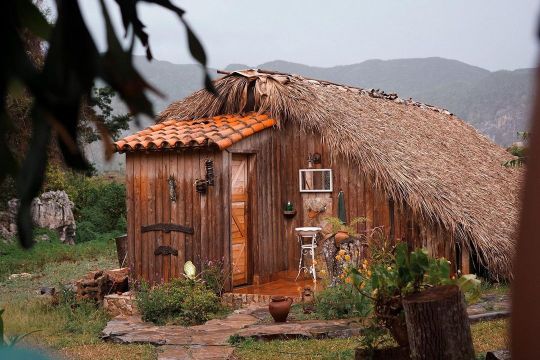
Escape to the serene Viñales Valley, Cuba's premier natural attraction, and experience the best of island life. Stay in our boutique accommodations, where rustic charm meets modern luxury. Take in the stunning landscapes, explore the tobacco fields, and immerse yourself in the vibrant culture of the region. Book with @acjourneys now for an unforgettable adventure! #cuba #cubavacations #travel #cubatravel #visitcuba #cigar #vinales #cubalifestyle #travelgram #luxuryhotel #beautifuldestinations #wanderlust #travelblogger #travelphotography #instatravel #beautifulhotels #hotels #luxuryworldtraveler #traveltheworld #instagood #lifestyle #wonderful_places / Photography by @alexan_mndz (at Viñales, Cuba) https://www.instagram.com/p/CqIe8yDOkCT/?igshid=NGJjMDIxMWI=
#cuba#cubavacations#travel#cubatravel#visitcuba#cigar#vinales#cubalifestyle#travelgram#luxuryhotel#beautifuldestinations#wanderlust#travelblogger#travelphotography#instatravel#beautifulhotels#hotels#luxuryworldtraveler#traveltheworld#instagood#lifestyle#wonderful_places
2 notes
·
View notes
Text
youtube
10 Most Beautiful Places to Visit in Cuba | Stunning Caribbean Destinations | Life Travel
https://expedia.com/affiliate/L7ZPMVW
https://airalo.tp.st/UYXhV3Jr
http://knowledgeglaxy.com/travels/
Description:
Cuba is a Caribbean paradise filled with rich history, vibrant culture, and breathtaking landscapes! In this video, we take you through the 10 most beautiful destinations in Cuba, from colonial cities and stunning beaches to lush valleys and historical sites.
🌍 Top Places Featured:
1️⃣ Havana ��� A city of colorful streets, classic cars, and lively music 2️⃣ Varadero Beach – Crystal-clear waters and white sandy beaches 3️⃣ Viñales Valley – A lush green paradise with unique limestone hills 4️⃣ Trinidad – A UNESCO-listed town with stunning colonial architecture 5️⃣ Cienfuegos – Known as "The Pearl of the South," with French-inspired architecture 6️⃣ Santiago de Cuba – The cultural capital, home to Afro-Cuban traditions 7️⃣ Cayo Coco – A stunning island with breathtaking beaches and coral reefs 8️⃣ Playa Paraíso (Cayo Largo) – One of Cuba’s most secluded and pristine beaches 9️⃣ Baracoa – Cuba’s oldest city, surrounded by tropical rainforests 🔟 Camagüey – A maze-like city with beautiful colonial plazas
✈️ Cuba is calling! Discover its stunning landscapes, rich history, and vibrant culture.
🔔 Don’t forget to Like, Comment & Subscribe for more travel inspiration!
0 notes
Text
Cuba Travel Tips - 27 Things You Need to Know Before You Visit!

Ready to immerse yourself in the vibrant culture of Cuba? Arm yourself with these 27 indispensable travel tips and get ready for the adventure of a lifetime.
0 notes
Text
Cuba

Cuba, the largest island in the Caribbean, is a country that boasts a rich culture, fascinating history, and vibrant tourism industry. From its stunning natural landscapes to its colorful cities and warm people, Cuba has something to offer everyone. Let's take a closer look at some of the key aspects that make this country so unique and attractive to visitors. The name "Cuba" is believed to have its origin in the Taíno language, the indigenous people of the island prior to its colonization by the Spanish. They called the island "Coabana," which is thought to mean "great place." Over time, the name evolved into "Cuba." Cuba has a long and complex history. Prior to the arrival of the Spanish in the late 15th century, the island was inhabited by the Taíno people. During the colonial period, Cuba became a major center of trade and commerce, particularly in sugar production. In the 20th century, Cuba underwent a series of political upheavals, including the Cuban Revolution of the 1950s, which saw the establishment of the socialist government that remains in power today. Despite its tumultuous past, Cuba is now a country rich in culture and history, with a unique blend of African, European, and indigenous influences. Cuba is geologically unique due to its location at the boundary between two major tectonic plates, which gives rise to a diverse range of landscapes and features. The island is home to a number of mountain ranges, as well as low-lying plains, wetlands, and coastal regions, all of which provide habitats for a rich variety of plant and animal species. Cuba's geology also contributes to its stunning natural beauty, with beaches, waterfalls, and limestone caves attracting millions of tourists each year. Cuba is the largest island in the Caribbean and is located just 90 miles south of Florida. The country is divided into 15 provinces, each with its own unique cultural and natural heritage. From the bustling streets of Havana to the mountainous terrain of the Sierra Maestra, Cuba's geography is as varied as it is picturesque. The island is also home to a number of important wetlands and natural reserves, which are vital for the conservation of both endemic and migratory species of plants and animals. Cuba's ecology is one of its greatest assets, with a wealth of unique habitats and species found nowhere else on earth. From tropical rainforests to coral reefs, Cuba's natural beauty is a testament to its commitment to conservation and environmental protection. The country has a number of national parks and protected areas, such as the Ciénaga de Zapata, which is the largest wetland in the Caribbean and home to over 900 plant and animal species. Cuba's biodiversity is legendary, with over 7,000 species of plants and animals found on the island. This includes over 350 species of birds, as well as endemic species of mammals, reptiles, and amphibians. Cuba is also home to a number of endangered or threatened species, such as the Cuban crocodile, the Cuban hutia, and the ivory-billed woodpecker, which is considered extinct in all other parts of the world. Cuba's climate is tropical, with year-round warm temperatures and high humidity. The island experiences two main seasons – the wet season, which runs from May to October, and the dry season, which runs from November to April. However, there are regional variations, with the eastern parts of Cuba experiencing a longer wet season than the western parts. Hurricanes can also occur between June and November, particularly in the northern and eastern regions of the island. Like many countries, Cuba faces a number of environmental challenges, including deforestation, erosion, and soil degradation. However, the Cuban government has taken a proactive approach to tackling these issues, with a number of policies in place to promote sustainable land use, habitat conservation, and renewable energy. The country is also a pioneer in organic agriculture, with over 200,000 small-scale farmers producing organic crops and livestock. Cuba is a socialist republic with a one-party system of government. The Communist Party of Cuba is the only legal political party in the country and exercises significant control over government policies and decision-making. The current president of Cuba is Miguel Díaz-Canel, who took office in 2018. Despite its political system, Cuba is a popular tourist destination for people from all over the world, drawn by its unique culture, history, and natural beauty. Cuba's economy is heavily reliant on tourism, which generates significant revenue for the country. Other important industries include agriculture, mining, and construction. Despite the country's wealth of natural resources, Cuba's economy has faced significant challenges, including an ongoing trade embargo by the United States. The Cuban government has introduced a number of economic reforms in recent years to try and stimulate growth and attract foreign investment. Cuba's infrastructure is somewhat limited, with many areas of the country lacking basic services such as reliable electricity and running water. However, the government has made significant investments in transportation, energy, and communication systems in recent years, particularly in the tourism sector. Cuba has a number of airports, ports, and highways, as well as a national railway system that connects many parts of the island. Cuba has made significant advances in the fields of science and technology, particularly in the areas of medicine and biotechnology. Cuban scientists have developed a number of innovative drugs and medical treatments, including a lung cancer vaccine that has shown promising results in clinical trials. The country is also a pioneer in renewable energy, with a number of large-scale wind and solar projects aimed at reducing reliance on fossil fuels. Cuba has produced a number of famous artists, writers, musicians, and sports figures over the years. Some of the most notable include author Ernest Hemingway, musicians Compay Segundo and Ibrahim Ferrer, and baseball players José Contreras and Yasiel Puig. Cuba's cultural heritage is an important part of its identity and remains a major draw for visitors from around the world. Cuba is a multiethnic country with a population of over 11 million people. The majority of Cubans are of mixed Afro-Caribbean and European descent. The country has a high literacy rate, with education and healthcare being free and available to all. Life expectancy is also relatively high, with Cubans living, on average, into their late 70s. Cuba is a predominantly Christian country, with the Catholic Church being the largest religious institution. However, there are also significant numbers of Protestants, as well as practitioners of African and indigenous religions such as Santeria and Yoruba. Religious freedom is guaranteed by the Cuban constitution, and the country is known for its vibrant and colorful religious festivals and traditions. Spanish is the official language of Cuba, spoken by the majority of the population. However, there are also significant numbers of Cubans who speak English, French, and other languages, particularly in the tourism industry. Cuban Spanish has its own unique accent and vocabulary, which reflects the country's rich cultural heritage and diverse influences. Cuba has a world-renowned healthcare system, which is free and available to all citizens. The country has a high number of doctors and nurses per capita, and has made significant advances in the fields of medical research and biotechnology. Cuba is also a major medical tourism destination, with thousands of people from around the world traveling to the country each year to receive high-quality, low-cost medical treatments. Cuba's culture is as diverse and colorful as its history. From its music and dance traditions to its literature and art, Cuba has a rich and vibrant cultural heritage that is unique in the world. Some of the most famous cultural exports include salsa music, which has its roots in the Cuban son style, and the visual arts, which are known for their bold colors and dynamic themes. Cuban cuisine is also a major part of the country's culture, with traditional dishes like ropa vieja and arroz con pollo being beloved by both locals and visitors alike. Cuba is home to a number of fascinating cities, each with its own unique character and charm. Havana, the capital, is a colorful and vibrant city steeped in history and culture, with its colonial-era architecture and famous Malecon seawall. Santiago de Cuba, the second-largest city, is known for its Afro-Caribbean music and dance traditions, while Cienfuegos, on the southern coast, is noted for its French-inspired architecture and picturesque bay. - Havana - Baracoa - Trinidad - Camagüey - Viñales There are countless places to visit in Cuba, from the charming colonial cities to the stunning natural landscapes. Some of the top tourist destinations include: - Varadero Beach - Valle de Viñales - Havana's Old City - El Malecon - Castillo de San Pedro de la Roca in Santiago de Cuba Cuban cuisine is a unique blend of Spanish and African flavors, with a strong emphasis on fresh ingredients and bold seasonings. Some of the most popular dishes include ropa vieja (shredded beef), arroz con pollo (chicken and rice), and lechon asado (roast pork). Cuba is also famous for its rum, which is used in many popular cocktails such as the mojito and the Cuba libre. Flights to Cuba are available from many major cities around the world, including New York, Toronto, and Mexico City. Havana's José Martí International Airport is the country's main gateway, with direct flights to Europe, Latin America, and various cities in the United States. Visitors to Cuba have a range of accommodation options to choose from, including hotels, resorts, and private homestays known as casas particulares. Many of the country's larger hotels are located in the major cities and tourist areas, while casas particulares are often found in residential neighborhoods and provide visitors with an authentic Cuban experience. Cuba has always been a country of intrigue and fascination for people around the world. From its famous musicians and writers to its revolutionary government and tropical landscapes, Cuba has captured the imagination of people from all walks of life. While there are certainly challenges facing the country, its unique culture, history, and natural beauty continue to make it a beloved destination for millions of visitors each year.
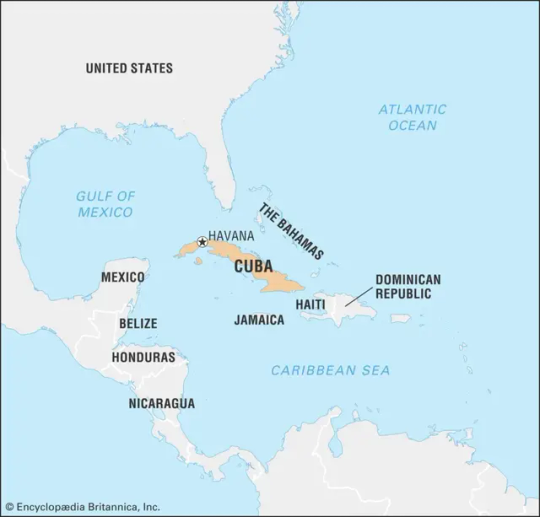
Etymology
The name 'Cuba' is believed to have originated from the Taíno language, which was spoken by the indigenous people of the island. The exact meaning of the word is unclear, but it is thought to mean "where fertile land is abundant" or "great place." However, there are other theories about the origin of the name, including that it came from the Carib word 'cibao,' which means "rocky place," or the Guanajatabey language, where it meant "place." During the colonial period, Cuba was also known as 'Juana' in honor of the daughter of the Spanish monarchs, Ferdinand and Isabella. Later, it was called 'Fernandina' after the Spanish king Ferdinand VI and 'Santiago' after the patron saint of Spain's army. However, the name 'Cuba' continues to be the most commonly used name for the island. The name has also been used in various cultural references and popular media. For example, the famous drink, 'Cuba Libre,' meaning 'Free Cuba' in Spanish, was invented in 1900 when American soldiers mixed Coca-Cola with rum and added a slice of lime to celebrate Cuba's independence. Cuba has been featured in numerous literary works and films, and its name has become synonymous with its unique culture, history, and political situation.
History
Cuban history is a rich and complex tapestry of different cultures and influences. The island was first inhabited by various indigenous groups, such as the Ciboney and the Taíno peoples, who lived there for thousands of years before the arrival of Europeans. The Spanish first discovered Cuba in 1492, during Christopher Columbus' first voyage to the Americas. The island was claimed by Spain and soon became a major center of sugar production and slave trade. Throughout the 16th and 17th centuries, Cuba grew in significance as a center of maritime commerce, and became a frequent target of attacks by other European powers, such as England and France. In the late 19th century, Cuba began to fight for its independence from Spain, culminating in a series of wars and revolutions that persisted until 1898 when Spain was forced to cede Cuba to the United States. Under American occupation, Cuba underwent major social and economic changes, with much of the country's infrastructure and natural resources being developed to benefit American interests. In the early 20th century, Cuban nationalism began to take hold, leading to the overthrow of American-backed regimes and the establishment of a new, socialist government under Fidel Castro in 1959. Cuba remained at the center of Cold War politics for several decades, with tensions between Cuba and the United States often coming to a head. Despite being under embargo by the US since the 1960s, Cuba has managed to maintain its independence and develop its own unique political and social systems. Today, Cuba is a vibrant and culturally rich country, home to a diverse array of peoples and traditions. Its history is one of resilience and resistance, and continues to shape the country's identity and relationship with the world.
Geology
Cuba is known for its unique geology, which has played an important role in its history. The island was formed by a series of geological events, including volcanic activity, tectonic movement, and erosion. Cuba's geology is diverse, with different regions of the island featuring distinct geological features. One of the most unique geological features of Cuba is the karst landscape found in the western part of the island. This area is characterized by limestone formations, including mogotes, or steep-sided hills, and caves. The mogotes are particularly striking, rising abruptly from the surrounding farmland and creating a visually stunning landscape. The caves in this region, such as the Cueva de los Portales, have played an important role in Cuba's history, serving as hiding places for revolutionary forces and as ceremonial sites for the indigenous Taino people. In addition to the karst landscape, Cuba is home to several mountain ranges, including the Sierra Maestra and the Sierra del Escambray. These mountains are not only visually striking but also function as important watersheds and habitats for a variety of plant and animal species. The island's geology also plays a role in Cuba's economy. The limestone found in the karst landscape is used for construction and building materials, while clay deposits in the eastern part of the island are mined for ceramics. Cuba's geology has also shaped its history in less positive ways. The island is located in a region of frequent seismic activity and is susceptible to earthquakes. In 1932, a devastating earthquake struck the eastern part of the island, causing widespread damage and loss of life. Cuba's geology is an important aspect of its identity and has played a significant role in shaping its history and economy. It is also a visually stunning feature of the island that attracts visitors from around the world.
Geography
Cuba is the largest island in the Caribbean Sea. Located between the North Atlantic Ocean and the Gulf of Mexico, the island spans approximately 1,250 km from east to west, and 100 km at its narrowest point. Cuba has an area of 109,884 sq. km, making it the 17th largest island in the world. Cuba is divided into 15 provinces and one special municipality, the Isla de la Juventud. The provinces are further divided into municipalities. The capital of Cuba is Havana, which is also the largest city in the country. The island's topography is characterized by a chain of mountains that run parallel to the southern coast and the Sierra Maestra range in the southeast. The highest point in Cuba is Pico Turquino, which stands at 1,974 meters tall. Regions Description Western Cuba This region encompasses the provinces of Pinar del Rio, Artemisa, and part of Havana. It is characterized by rolling hills and lush valleys. Central Cuba Central Cuba includes the provinces of Villa Clara, Sancti Spiritus, Cienfuegos, and part of Matanzas. It is a mountainous area with fertile plains and beautiful beaches. Eastern Cuba This region comprises the provinces of Camaguey, Las Tunas, Holguin, Granma, Santiago de Cuba, and Guantanamo. It is the most mountainous region in Cuba and is known for its rugged terrain, lush forests, and cascading waterfalls. Cuba is also known for its long coastline, which stretches over 5,700 km. It is dotted with beautiful beaches, coral reefs, and cays. The Gulf of Mexico lies to the north of Cuba, while the Caribbean Sea lies to the south. The Windward Passage separates Cuba from Haiti and the Dominican Republic to the east. Thanks to its unique geography, Cuba experiences a diverse range of climates. The western part of the island has a semi-tropical climate, while the east is more tropical. The average temperature in Cuba is around 25°C and the island has a rainy season that lasts from May to October. The varied topography and beautiful coastline make Cuba an attractive destination for tourists. Visitors can enjoy hiking, scuba diving, and snorkeling, as well as learning about Cuba's rich history and vibrant culture.
Ecology
Cuba is known for its rich ecology and diverse natural habitats. From lush rainforests to pristine beaches, the island has a wide range of environments that support a variety of plant and animal life. The country's commitment to conservation and sustainability has ensured that these habitats remain protected for future generations to enjoy. Cuba's ecology is characterized by its tropical climate and unique geography. The island is home to some of the largest wetlands in the Caribbean, as well as to the popular Sierra Maestra mountain range. The geography allows for a wide range of habitats, including mangrove swamps, coral reefs, and deciduous forests. The island also benefits from its location, which acts as a natural barrier to invasive species, helping to preserve the unique flora and fauna found in Cuba. Cuba's isolation has allowed for the evolution of many unique species that cannot be found elsewhere in the world, including the Cuban crocodile, the Cuban hutia, and several species of bats. Cuba's coastline is another key natural habitat. The island's beaches are home to several species of sea turtles, as well as to numerous bird species that nest along the shore. The coral reefs that surround the island are also teeming with aquatic life, including many species of fish, mollusks, and crustaceans. Despite the country's commitment to conservation, Cuba is facing numerous environmental challenges. Deforestation has led to the loss of many habitats, particularly in the mountainous regions. Read the full article
0 notes
Text
#cuba #cubanarchitecture #cubatravel #cubatrip #gallery #visitcuba #cubaphoto #cubaphotography #travelcuba #cubastyle #explorecuba #instacuba #ig #discovercuba #ilovecuba #lovecuba #cubagallery #loves #igerscuba #micuba #day #igcuba #havana #architecture #lahabana #havanaarchitecture #architecturephotography #havanacuba #travelphotography #cubaon
0 notes
Photo

#habana #cuba #havana #lahabana #cubanos #cuban #cubatravel #travel #cubanosporelmundo #habanavieja #cigar #habanacuba #habanos #cigars #havanacuba #visitcuba #miami #photography #cigarlife #cubalibre #ig #oldhavana #cigaroftheday #cubano #travelphotography #cubana #cohiba #varadero #cigaraficionado #cubanlife https://www.instagram.com/p/Co65BX_uz9I/?igshid=NGJjMDIxMWI=
#habana#cuba#havana#lahabana#cubanos#cuban#cubatravel#travel#cubanosporelmundo#habanavieja#cigar#habanacuba#habanos#cigars#havanacuba#visitcuba#miami#photography#cigarlife#cubalibre#ig#oldhavana#cigaroftheday#cubano#travelphotography#cubana#cohiba#varadero#cigaraficionado#cubanlife
4 notes
·
View notes
Photo
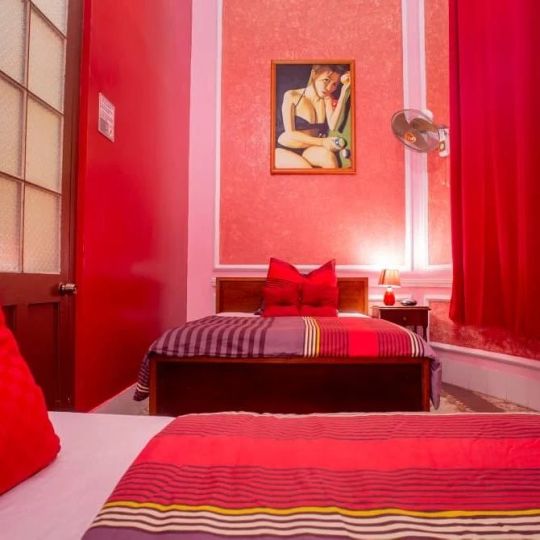
El arte y el buen gusto define las habitaciones de nuestro grupo de alojamientos🏨 Comenta cuál es tu favorito? ⤵️📝 📍Casa Colonial 1923. 📍Penthouse B&W. 📍Apartamento Blues. Reservas en el link de la bio 🔗 #book #booknow #tripcuba #Cuba #travelcuba #traveladdict #traveldiaries #vedado #osmaryhospedajes #traveling #travelgrams #travelsolo #hospedajefamiliar #airbnbhome #airbnbexperience #cubatrip #visitcuba #caribe #caribbean #trending #hostal #cubanlife #instacuba #lovecuba #active #adorable #airbnbguest #Airbnb #turismoCuba #havana #travelling (en Vedado, Ciudad De La Habana, Cuba) https://www.instagram.com/p/CnxWPJ3B-gn/?igshid=NGJjMDIxMWI=
#book#booknow#tripcuba#cuba#travelcuba#traveladdict#traveldiaries#vedado#osmaryhospedajes#traveling#travelgrams#travelsolo#hospedajefamiliar#airbnbhome#airbnbexperience#cubatrip#visitcuba#caribe#caribbean#trending#hostal#cubanlife#instacuba#lovecuba#active#adorable#airbnbguest#airbnb#turismocuba#havana
2 notes
·
View notes
Photo

🇨🇺
You can never go wrong with ropa vieja and plátanos!😍
Yes, we’re obsessed with plantains...mind your business.
#Caribbean Crew#caribbean food#caribbean cuisine#Cuban Culture#cuban food#cuba#Island vibes#food porn#foodgasm#visitcuba#travel
316 notes
·
View notes
Text

Feel the warm sand between your toes and soak up the sun in Cuba's tropical haven. This idyllic beach is your gateway to relaxation. 🌟 🌊
📞 Call us today on 0207 071 3636 or visit our official website https://www.lovecuba.com/
#travel#Cuba#cuban#lovecuba#ilovecuba#lovecubauk#classiccars#visitcuba#CubaUnica#cubaHolidays#caribbean#CubaTravel#unicacuba
2 notes
·
View notes
Photo
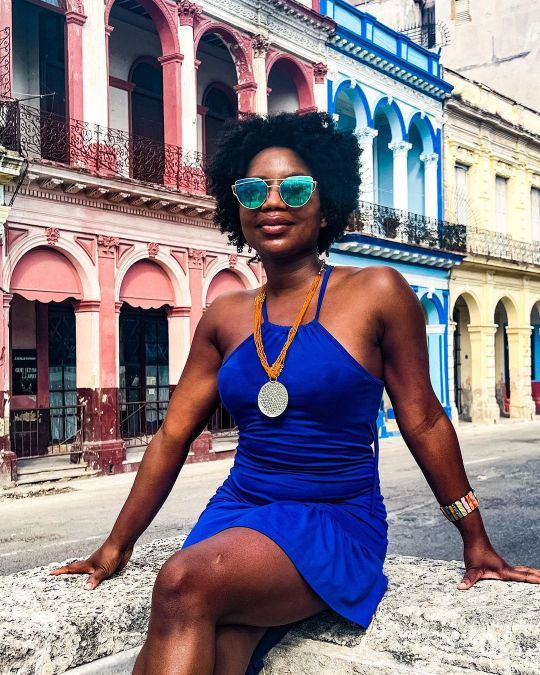
Just wanted to say thank you to you guys and mention how much I love y’all! 🥰❤️ ………………. I wish I had words to describe the chaos I’ve been going through the past few months. With my postdoctoral fellowship coming to an end, I’ve been on a hunt to land one of the most coveted positions in the pharmaceutical industry. I’ve faced some pretty bad imposter syndrome - and I am not one to usually let it consume me. This time though, it hit different. However, I’m grateful for my mentors in this industry, family, and friends, who have held me up the past few months, when I would break down. Not to mention, you guys ❤️ and just social media in general. I’ve barely been able to stay afloat on IG lately, but banking on finding my balance soon. However, I’ve felt consumed with love in this space at a time where, professionally, it’s been anything but that. So for that, I just wanted to say thank you to you all. …………………… A few weeks ago, I lost a very wonderful friend and avid supporter of my blog. It was so sudden, but more so heartbreaking cause our last correspondence was right here on IG (via DMs). He was telling me how proud he was of me for how far I have come. Never would have thought that DM would be our last. I’ve learned to be that much more appreciative of those who encompass me. …………………… Anyway, I just wanted to reiterate how grateful I am for each and every one of you. You guys are the reason I keep doing this. #beyondeden🌺 . . . . . #Cuba #travelCuba #Cubalove #visitcuba #Cubalibre #Caribbean #Iamenough #newyorkblogger #blackgirltravelmovement #naturallyme #Travelnoire #lovetotravel #grateful #momentsofmine #traveldiary #travelmore #essencetravels #colorventures #pharma #pharmd (at Old Havana - Cuba) https://www.instagram.com/p/CqWlbXpuiAf/?igshid=NGJjMDIxMWI=
#beyondeden🌺#cuba#travelcuba#cubalove#visitcuba#cubalibre#caribbean#iamenough#newyorkblogger#blackgirltravelmovement#naturallyme#travelnoire#lovetotravel#grateful#momentsofmine#traveldiary#travelmore#essencetravels#colorventures#pharma#pharmd
3 notes
·
View notes
Photo
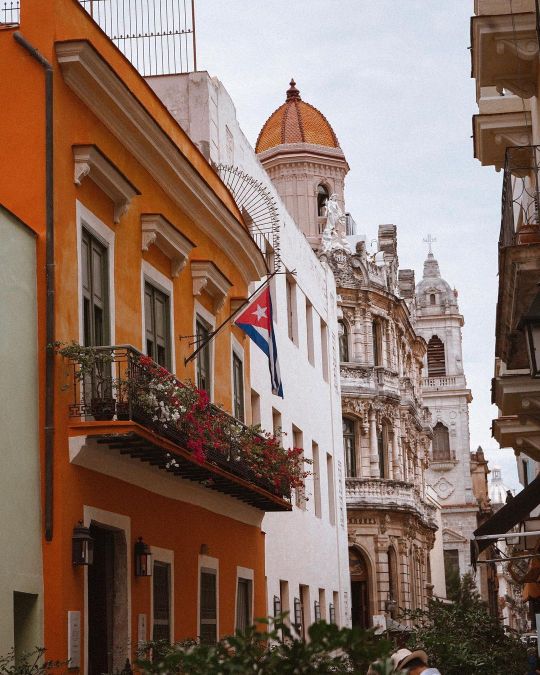
Havana, for all its smells, sweat, crumbling walls, isolation and difficult history, is the most romantic city in the world. Havana is a uniquely complicated city and contains a great many histories. 📸📸📸📸📸 📸📸📸📸 📸📸📸 📸📸 📸 📷 by @alexan_mndz #havana #cuba #habana #lahabana #travel #neverbethesame #cubatravel #havanacuba #cuban #love #romance #cubanos #cubanosporelmundo #travelphotography #cigar #photography #se #myohmy #oldhavana #visitcuba #music (at Havana, Cuba) https://www.instagram.com/p/CmpX__BPhn4/?igshid=NGJjMDIxMWI=
#havana#cuba#habana#lahabana#travel#neverbethesame#cubatravel#havanacuba#cuban#love#romance#cubanos#cubanosporelmundo#travelphotography#cigar#photography#se#myohmy#oldhavana#visitcuba#music
4 notes
·
View notes
Photo

Viajar viajar, simplemente viajar y conocer 🇨🇺📸 📍 Iglesia del Cobre #santiagodecuba . . . . ⠀ ⠀⠀⠀⠀⠀⠀⠀⠀ #quelevoyahacersisoyasí #mariamontenegrofficial #mariamontenegrophotography #photographylife #wanderlust #visitcuba #citylifeworld #cuban #wonderfulplaces #streetphotography #streetphotographers #cubana #travelbloguer #travelphotography #cubanlife #travelmore #countryside #viajera #wonderful_place #traveltheworld #instatravel #photoftheday #awesome_earthpix #travel_captures #instaphotos #beautifuldestinations #lovecuba #exploretheworld #fotografa (en El Cobre, Santiago De Cuba, Cuba) https://www.instagram.com/p/CPI4IZ_rzXw/?utm_medium=tumblr
#santiagodecuba#quelevoyahacersisoyasí#mariamontenegrofficial#mariamontenegrophotography#photographylife#wanderlust#visitcuba#citylifeworld#cuban#wonderfulplaces#streetphotography#streetphotographers#cubana#travelbloguer#travelphotography#cubanlife#travelmore#countryside#viajera#wonderful_place#traveltheworld#instatravel#photoftheday#awesome_earthpix#travel_captures#instaphotos#beautifuldestinations#lovecuba#exploretheworld#fotografa
1 note
·
View note
Photo

🏝 🚘 Cuban Cadillacs - La Habana - [CUBA🇨🇺] ______________________________________________________ . ↘️ Check out the reportages and countrypage: https://vagabundler.com/cuba ↗️ ______________________________________________________ #cuba #habana #havanna #cadillac #oldtimer #cars #visitcuba #destinationearth #cubancars #cubatravel #gondwana #cubatrip #cubastyle #worldplaces #instatravel #vagabundler #travelbook #cadillaclife #adventure #cadillaclove #history #travelgram #lahabana #travelling #travelblogger #soultravelers #travelholic #culture #photographer #travelphotos (hier: La Habana Cuba) https://www.instagram.com/p/CITrgzBL2o_/?igshid=me3rmux0n623
#cuba#habana#havanna#cadillac#oldtimer#cars#visitcuba#destinationearth#cubancars#cubatravel#gondwana#cubatrip#cubastyle#worldplaces#instatravel#vagabundler#travelbook#cadillaclife#adventure#cadillaclove#history#travelgram#lahabana#travelling#travelblogger#soultravelers#travelholic#culture#photographer#travelphotos
1 note
·
View note
Photo

We need two more volunteers for our bats in Cuba program. Without our volunteers these programs can't run. Without these population surveys we don't know all the species that live in the national parks. Without comprehensive knowledge of the species in these parks, the parks are at risk for development. Many of the bats are endemic to Cuba- they are found no where else on the planet so the protection of their homes is critical to their survival on Earth. We don't have to mourn the loss of another species, we just have to support the scientists who are researching and protecting them. . . . . . #citizenscience #bats #lovebats #battylove #helpanimals #Cuba #volunteer #visitcuba #loveanimals #volunteercuba #alternativespringbreak #vetmed #whatrvnsdo #rvt #oavt #cecredits #cpd #collegecredits #gapyear #helpcience #womeninSTEM #overseasvolunteer #abroadexperiences #familytravelmatters #explorethegapyear #overseasexperience https://www.instagram.com/p/B7lFYNXg2_N/?igshid=1rpntf8ct41hi
#citizenscience#bats#lovebats#battylove#helpanimals#cuba#volunteer#visitcuba#loveanimals#volunteercuba#alternativespringbreak#vetmed#whatrvnsdo#rvt#oavt#cecredits#cpd#collegecredits#gapyear#helpcience#womeninstem#overseasvolunteer#abroadexperiences#familytravelmatters#explorethegapyear#overseasexperience
2 notes
·
View notes